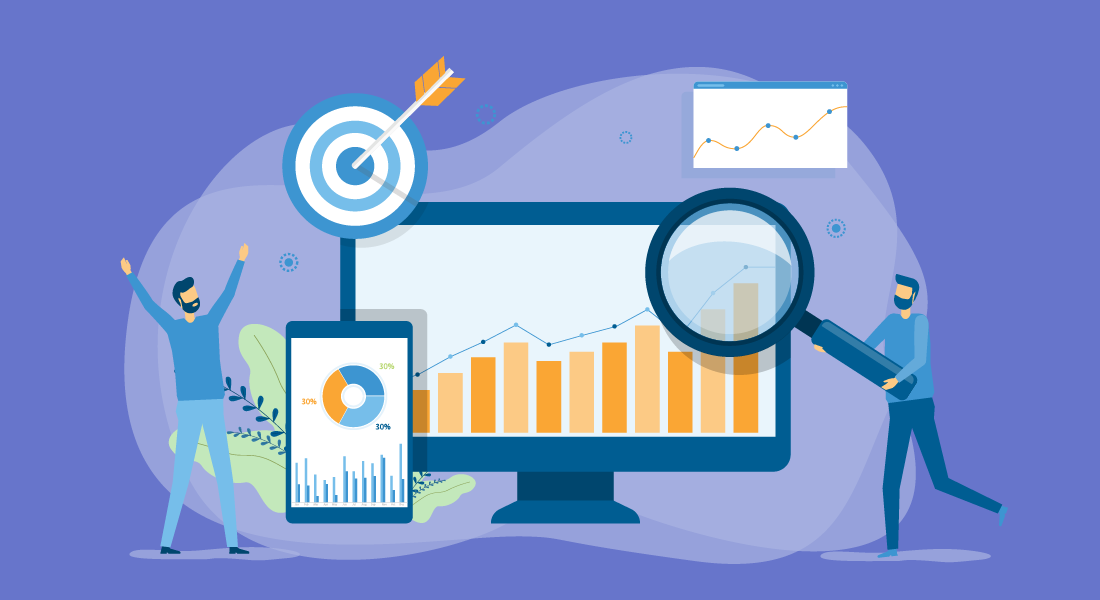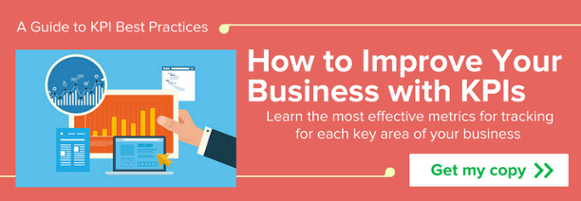How MSPs Can Boost Growth Through The Right KPI Dashboards

Tracking key performance indicators (KPIs) is a long-proven tactic for improving employee productivity. Using tools such as data dashboards, companies have motivated their employees to achieve greater results with more consistency, which has helped them with enterprise growth.
Why should your organization use KPI dashboards? Which business KPIs will help with your enterprise growth?
Why growing enterprises should leverage KPI dashboards
Growing enterprises often have numerous business objectives that they need to track—and not a lot of time to manually manage that data! KPI data dashboards help to simplify tracking and managing employee KPIs and business KPIs so leaders can check performance with a glance.
Instead of having to dig through several separate reports to track all of an employee’s or business unit’s performance metrics, leaders can simply take a look at a data dashboard to get the most relevant and important information in seconds. This information is also easy to collect for reports to key stakeholders who may need it.
With easy access to performance data, enterprises can identify trends (both positive and negative) and make changes to account for them. For example, if employees are struggling to meet a particular performance goal, it may be necessary to provide coaching to ensure employees have the skills they need to perform.
What business KPIs should you track to boost enterprise growth?
Many business owners, leaders, and stakeholders want to know which business KPIs they should track to improve their enterprise growth. The problem is that there is no true “one size fits all” solution when it comes to KPI tracking. Different enterprises will need to track different things to achieve the best growth results.
It takes an understanding of your business’ objectives and industry to determine the best KPI dashboards to use in your organization. Additionally, the KPIs you track for one business unit might not be a good fit for others in your company. Here are a few KPI examples to consider when choosing performance metrics to track in your organization:
Project KPIs
These are KPIs specific to a particular project that is going on. Two important project KPIs to consider include:
- Billable project hours. A measure of how many hours are spent on a given project in a set time frame. Managed service providers (MSPs) may use this metric to determine if they’re over-billing for a project (potentially indicating that they under-scoped the project).
- Overbudget projects. How many projects are currently over-budget? This metric can help provide an assessment of how well the company is managing its budget for projects and create early indications of issues that may cause the balance book to go into the red.
Customer service KPIs
KPIs related to how customers are being serviced. Customer service KPIs can help MSPs and other organizations determine if they’re meeting their service level agreements (SLAs) or if they need to make changes. Some customer service KPI examples include:
- Time to resolution. How long it takes for a service ticket or customer call to be resolved. This is often used to measure employee performance.
- Tickets/Cases closed each day. How many client/customer calls or tickets are resolved in a day? Measuring this can help identify potential problems with resolving customer service cases in the enterprise that need resolution.
- Customer complaint rate. The number of customers who have reached out to make a complaint about a product or service received versus the total number of customers. High complaint rates may indicate a major issue with a given product or service (or how it’s marketed) that needs to be fixed.
Financial KPIs
Every enterprise needs to carefully track and manage its financial performance data. Having the right financial KPIs can help business leaders anticipate their expenses, avoid potential over- and under-budgeting for key initiatives, and set expectations. Some financial KPIs to track for enterprise growth include:
- Past due receivables amount. Also called “accounts receivable,” the past due amount is an important metric to track so you can know how much payment to expect from clients. Tracking which accounts are past due is also important for reconciling payments with your clients.
- Earnings before interest, taxes, depreciation, and amortization (EBITDA). This metric is useful for determining your organization’s financial health. Numerous companies have used this metric to determine employee bonuses for the year.
- Gross margin per client. A measure of your company’s total revenue minus its direct costs (licenses, software, etc.) and fully loaded labor cost, which is then divided by total revenue to generate the gross margin percentage. Here’s the formula: (Total revenue – direct costs – fully loaded labor costs) / total revenue = gross profit margin.
Marketing is an important activity for making sure your enterprise’s brand gets in front of potential clients/customers. Marketing KPIs help enterprises establish the ROI of their marketing efforts, determine what is and isn’t working for their marketing, and identify issues that might be causing potential customers to leave the sales funnel. Some marketing KPI examples to track include:
- Cost per lead. A measure of how much money is spent on marketing to generate a single lead. Calculated by dividing total marketing spend by the number of leads generated.
- Customer lifetime value. A measure of how much a single customer is worth to your company over their lifetime. Useful for determining how much should be spent on marketing for each customer.
- Email deliverability. This is the number of emails sent successfully versus those that fail to be delivered or get sent to the spam folder. Failed deliveries can negatively impact your enterprise’s ability to send emails in the future, so this is an important metric for marketing leads to know.
Drive enterprise growth with BrightGauge’s comprehensive KPI dashboards
While the KPI example list shown above is far from comprehensive, it should provide a rough idea of how many different KPIs there are for companies to track. How can you track so many disparate business KPIs?
BrightGauge’s KPI dashboards are one way to track numerous metrics at a glance!
With BrightGauge, you can easily customize a data dashboard to present the most important metrics for your business unit or your company as a whole. Instead of digging through a dozen different data sources and apps, you can have BrightGauge collect everything you need to know into a single-pane view that is easy to parse.
Are you ready to get the data you need to fuel your enterprise’s growth? Reach out to the BrightGauge team today!
Free MSA Template
Whether you’re planning your first managed services agreement, or you’re ready to overhaul your existing version, we've got you covered!



